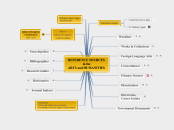Audio Lingual Method
Advantages
Students learn the everyday language of the target language
Students learnd the accurate pronunciation of words
Students make less mistakes because this method don't accepts mistakes
Speaking and listening skills are improving
Native like speaking ability is being acquiring
The Role of Students
Students are not more than listeners
Students have got very little control over the content and pace
Students are organisms that capable of taking form by a teacher and techniques
Background
It's used for being familiar with everyday and spoken language of target language
This method pays great importance to listening and speaking
It's an adapted version of Army Method
Criticism
Teacher centered
Language Laboratories
Insufficient reading and writing experience for students
Actually teachers are also being parrots!
Disadvantages
Teachers are oppressive
Stundents can't efficently improve their reading & writing skills
Students are being parrots by memorizing and repeating too many times, but can't know the excat meaning of what they are saying
The Role of Teacher
Teacher keep ss awake with different techniques
Teacher controls learning
The teacher is a model
Teacher is very active, s/he is the center such an orchestra leader!
Techniques
Grammar Games
>Give cue phrases, one at time, that fits into different slots in the dialogue line.
>Let the students fit those cue phrases, or words, into line where it belongs and let them say the line loudly
Backward Build-up Drill
Teaching long lines of dialogues:
>Break down the sentence into several parts
>Repeat a part of the sentence
>Let the students expand what they've repeated part by part until they are able to repeat thw whole sentence
Dialog Memorization
>Student takes the role of one person in dialogue and the other studen takes another and memorize the dialogues
>Let them switch the role and memorize vice versa
>Half of the class takes one role and the other half takes another role
>Some pairs of students may perform the dialogue for the rest of the class
Chain Drill
>Make students ask & answer questions with each other
>Check the students' speechs









